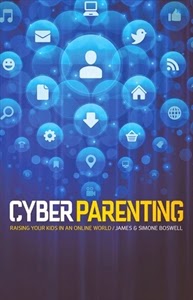 Far from the Tree, Andrew Solomon
Far from the Tree, Andrew Solomon
It has taken me a few months to get through this massive book, but boy was it worth it. This is a long review, but considering the length of the book, necessary.
Andrew Solomon has taken 10 years to write this study of parents, children and identity. Based around the idea that most parents have and expect to have children who are like them; those for whom the saying applies - “the apple doesn’t fall far from the tree”. Solomon has researched families where the children are different from their parents, and as such their identity does not always come through the vertical lines of genetics and family but through horizontal lines of similar experience.
Solomon takes 10 identities, illnesses or life conditions and thoroughly investigates each. The ten he has chosen are: deafness, dwarfs, Down’s Syndrome, autism, schizophrenia, disability (predominantly multiple severe disability), prodigies, children of rape, crime, and transgender. He makes it clear in the introduction there are others he could have chosen, but these were the ten he went with. He is also open about the fact that not all members of each group were happy about the inclusion of other groups alongside their own.
Each chapter has is a clear discussion of science, genetics and medicine about the condition where appropriate. Woven throughout is the real power of the book - personal stories. He spent hours and hours of time with people living lives with illness and challenging conditions. Throughout too is included his own personal experience of being both dyslexic and gay. He has experienced being different from his parents and while being completed loved and cared for, felt the reality that he was not always was they would have wished for.
The book achieves a number of goals:
- It opens our eyes to the varying life situations around us, without which society would be much less compassionate, aware and understanding.
- It investigates the relationship between parent and child and the bond that can form through both joys and struggles; and that most parents will rise to any challenge thrown at them.
- It looks at the differences between a condition being classified as an illness or an identity, and shows how both impact our perspective of someone’s quality of life.
- It looks at disability mostly positively and challenges the current medical view that all such disabilities should be screened out.
It is an incredibly powerful book and anyone who reads it will gain great benefit. For those for whom these life experiences resonate, you will find a voice of compassion, understanding and many others who also live similarly. For those who do not, it opens our eyes to the lives of those around us, for whom life is often harder, yet at the same time can be richer and produce more love and compassion than we think possible.
Some of the comments that resonated with me:
“Though many of us take pride in how different we are from our parents, we are endlessly sad at how different our children are from us.” (p2)
“All kinds of attributes make one less able. Illiteracy and poverty and disabilities, and so are stupidity, obesity and boringness. Extreme age and extreme youth are both disabilities. Faith is a disability insofar as it shields you from self-interest; atheism is a disability, too, for it shields you from hope.” (p33)
“Family inflicts the deepest wounds, then salves them the most tenderly” (p46)
“This book’s conundrum is that most of the families have ended up grateful for the experiences they would have done anything to avoid” (p47)
Looking at a book this large (955 pages), it is a solid read which takes some commitment and my paperback version has suffered under the weight! However, ignoring notes and references you are down to 700 pages. If you are unsure even about that - read the first chapter “Son”. I took down more quotes on this chapter alone that the rest of the book. Or you could also see if you can find an online interview with Solomon, I heard him on an ABC conversation.
It is written from an atheistic perspective. There will be large amounts of it you will disagree with from a Christian point of view. Not surprisingly in a book dealing with such issues, the question of abortion comes up throughout. He is clearly pro the right to choose - that is the right to choose to not keep a baby and the right to choose to keep a baby, whatever the diagnosis. Again and again, interviewed parents say that they were glad they never had the choice, for they would have aborted and now realise what their lives would have lacked had they done so. There is an increased poignancy to this repeated statement.
However, the call to love our neighbour as ourselves has never been presented more strongly for me in a non-Christian work, whether it is our co-worker who struggles with schizophrenia or the parent caring for a child with disability or the friend who struggles with transgender issues.
Even more than that for those of us in pastoral ministry, there are parents and children living with these issues or variants of them all around us. This book will help us to be a voice of compassion and grace with a willingness to understand and walk beside; as at the same time we use other resources to encourage one another to godly living.
























